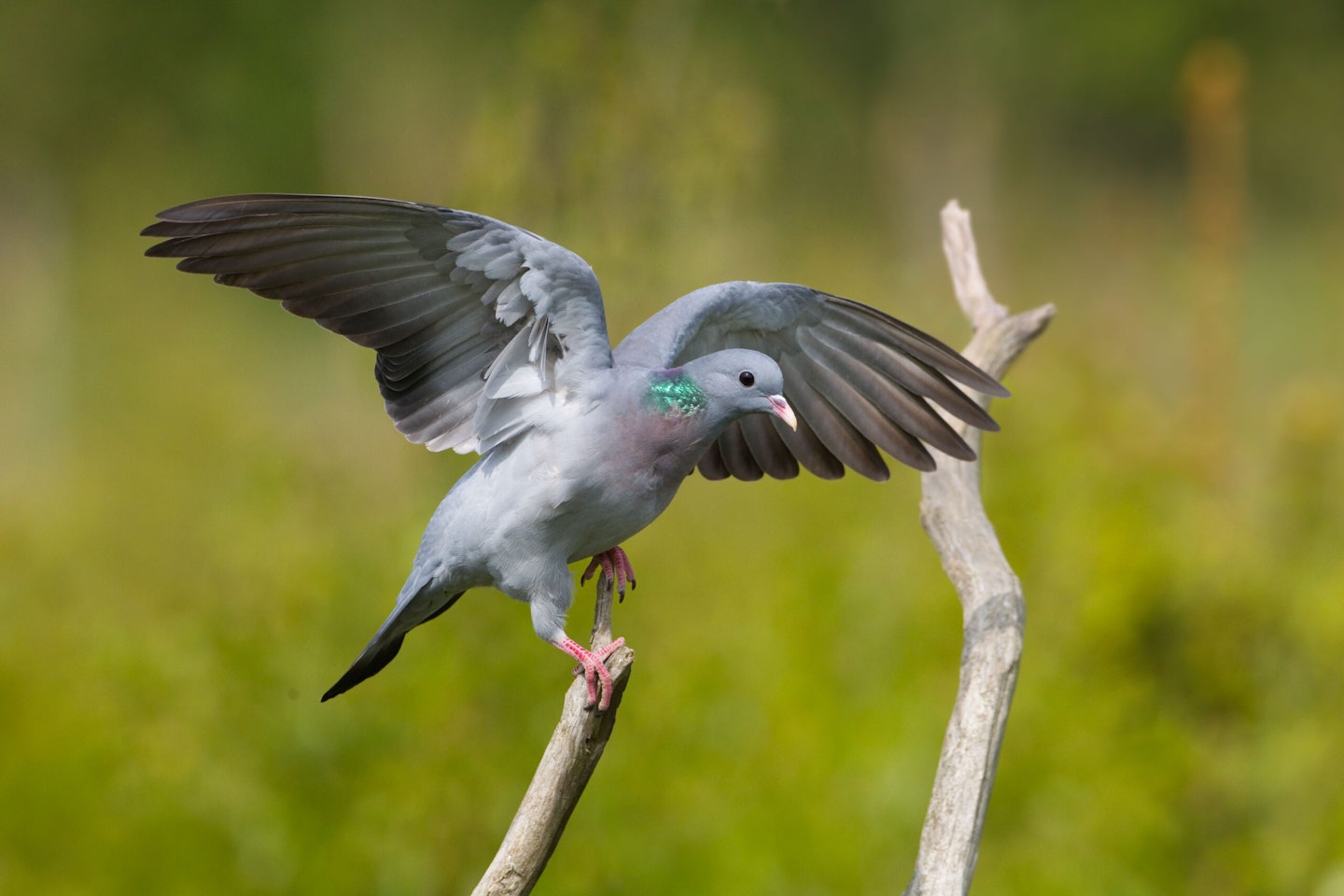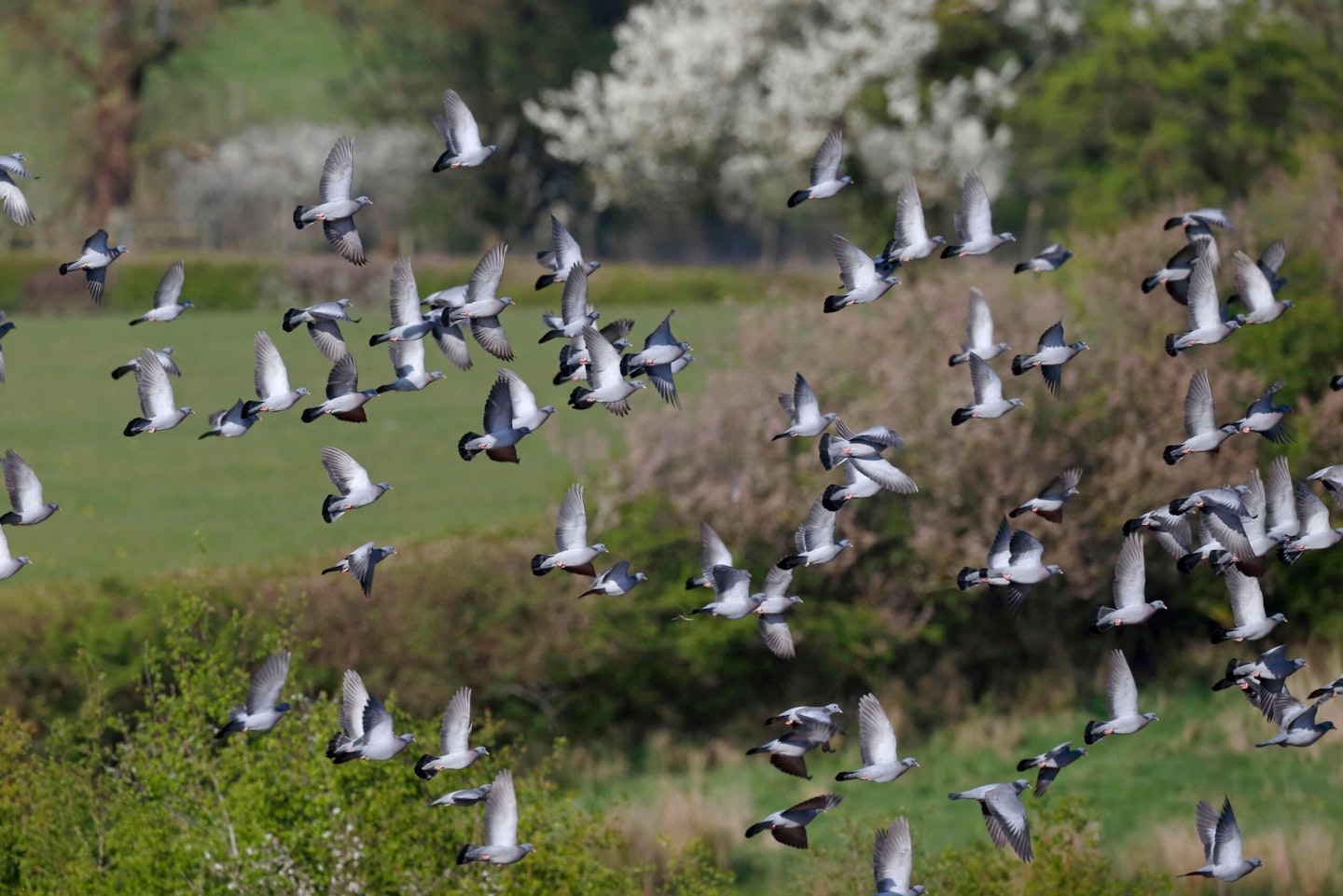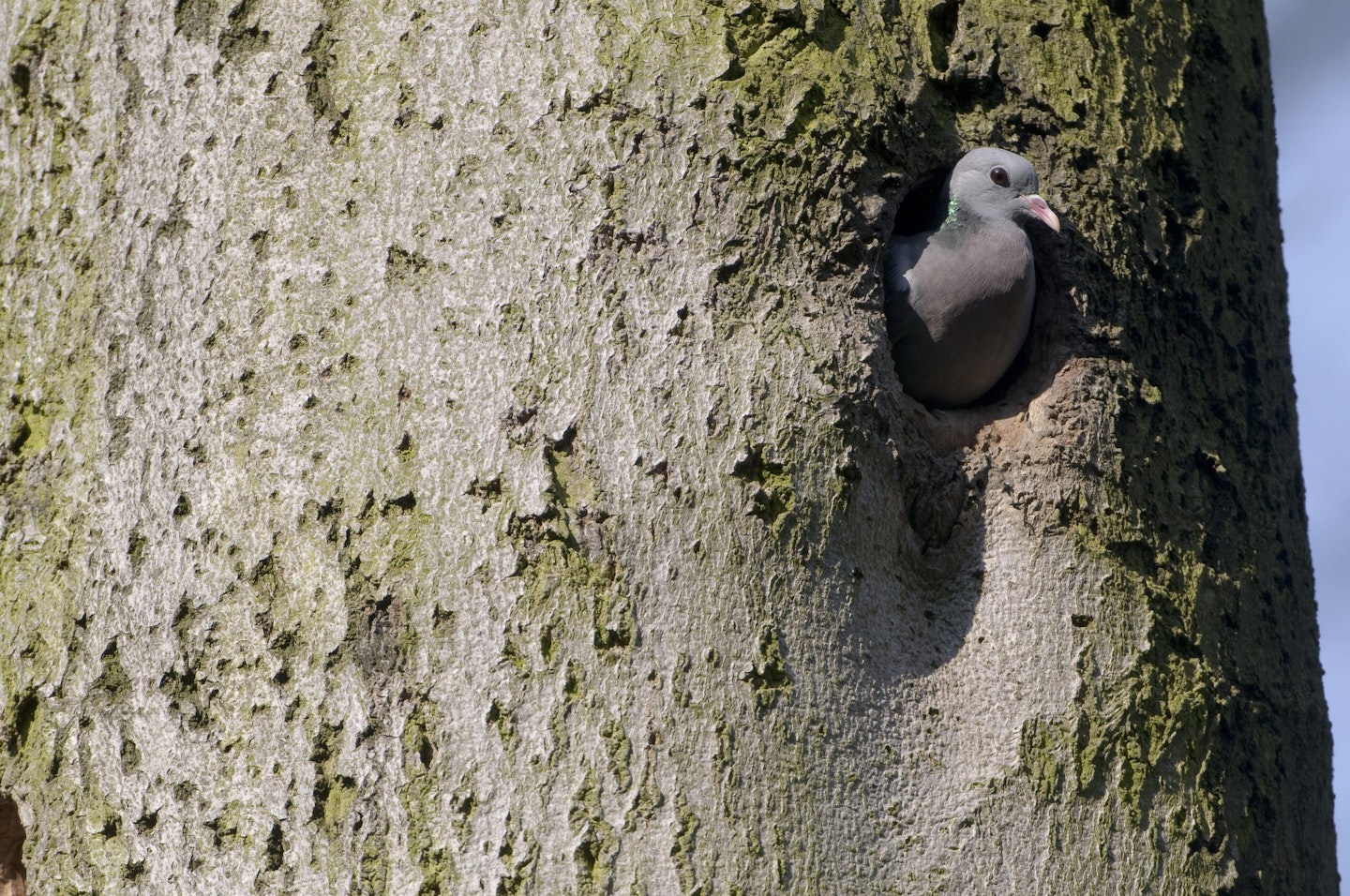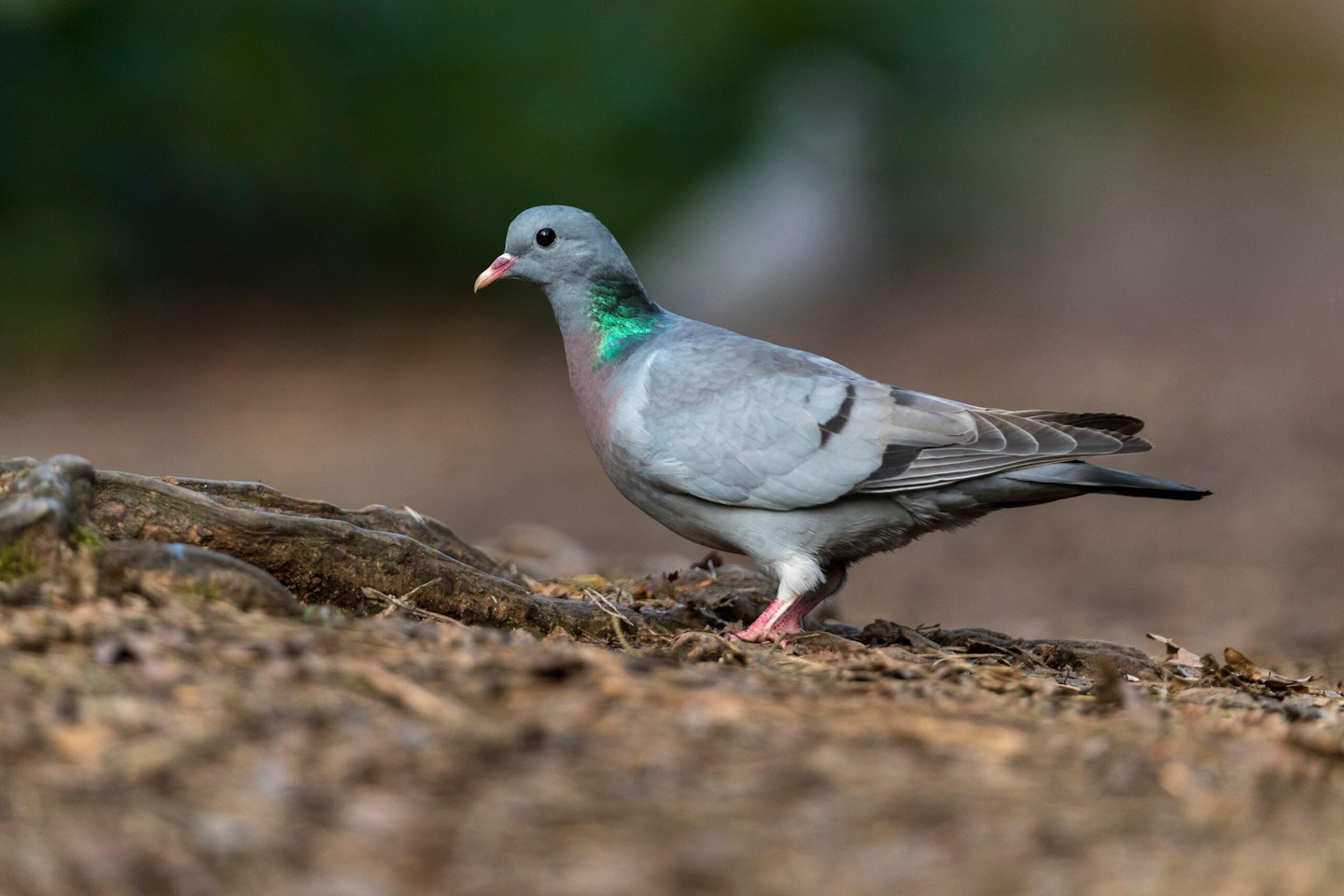It might be the UK’s most overlooked bird, but it has plenty to recommend it, writes Dominic Couzens

The female Stock Dove must be the easiest date in the world to impress. Out there in the big wide world, the jungle of life, males of various bird species are compelled to sing with vigour and invention, display brilliantly, protect a territory and often go through a repertoire of physical contortions, all under a female’s critical eye. But the male Stock Dove can just laugh at those unfortunates. Its display is ridiculously simple.
Literally, all it does is fly from one tree to another, maintaining the same altitude. As it takes off, it performs wingbeats deep enough for the opposing wingtips to snap together and make a clap, and it will also glide with its wings in a somewhat unimaginative V, about 15° above the horizontal. It might also fly in a wide circle. And that’s about it.

And, hilariously, the female is mesmerised. Should you witness this limp effort, you cannot help thinking there must be more. But in terms of performance, that’s where it ends. The enraptured female is, one might conclude, the most generous of all audiences.
To be fair, in order to get to the point of displaying above the treetops, the male does have to slug it out with other males to acquire a patch of woodland that contains some nesting-holes. In contrast to the other British pigeons and doves, Stock Doves usually nest in trees. Suitable holes are always at a premium, and so the early spring can witness some unexpectedly sharp interactions between males. The Stock Dove, with its pleasingly rounded head and dark eyes, has an eternally gentle look, but there is fire in its belly. Males often face each other on a branch and try to hit each other with their wings, or peck at their opponent. They often try to dislodge their combatant from its perch – and these fights can carry on for many hours. There are even reports of Stock Doves killing Little Owls in competition for nest holes, and fighting Jackdaws. Hence, a male Stock Dove earns the right, we might suppose to display in underwhelming fashion.

The song of the Stock Dove is as unremarkable as its display flight. At this time of the year, if you go into a deciduous woodland, you will be enveloped by the loud, raunchy cooing of the resident Woodpigeons, their insistent chorus being one of the key late summer bird sounds. But you cannot ever say that the Stock Dove’s song is anything other than a background track. It is very pleasing – a three-note coo with a distinctly surprised or mildly shocked air. If you will forgive me, the Stock Dove coo irredeemably reminds me of an elderly aunt’s disapproval, say, of a niece’s inappropriate clothing. But that it is if you hear it at all. It’s a mellifluous tree-top coo that you might never actually have clocked in your birding life.
The barely detectable song is symptomatic of the Stock Dove, which must surely be Britain’s most anonymous bird. Birders just don’t seem to register it; it is unmentioned; it’s missing from the stock-take. Although undoubtedly common – the British population is about 320,000 pairs – it is overlooked to a quite astonishing extent. This poem says it all:
Oh, missing Stock Dove
Why don’t I see you fly?
You’re under the radar
That’s the reason why.
But why is this such a poorly appreciated bird? Perhaps part of the problem is the relatives. Pigeons don’t excite much delight among birders, probably because they are so common and our species lack dazzling plumage. The Stock Dove is also very similar to both the abundant Woodpigeon and the multivariant Feral Pigeon, or Rock Dove. It takes a certain skill to identify one and, perhaps more importantly, it takes an effort of the will, and that is often missing. Yet the Stock Dove’s facelessness is still remarkable. It is a valid species with a distinct ecology and, as pigeons go, is thoroughly inoffensive. But of course, in times when you must be loud, or colourful, or downright strange, the Stock Dove is none of these things. It’s not a bird for the TikTok age.
The key ecological difference that makes the bird is its habit of nesting in tree holes, as mentioned before. That also explains the name – stock is an Old English word for tree trunk. Woodpigeons usually nest among the branches of trees and bushes and Feral Pigeons on buildings, so this is your defining Stock Dove feature (although not universal, see below).

Not many people study Stock Doves, but an investigation from Poland found that these birds particularly favour live Beech trees, and they prefer large specimens with holes high above ground. It is thought that both are anti-predator attributes. Beeches have famously smooth bark, making it relatively difficult for arboreal predators such as Pine Martens to reach holes high up in the canopy, climbing where they might risk injury. (Incidentally, Short-toed Treecreepers, with their shorter toes, often avoid beech bark, too!) Live trees probably create a warmer nest microclimate. However, this study was done in an area where most Stock Doves nested in holes made by Black Woodpeckers. Here in Britain, where Black Woodpeckers don’t occur, Stock Doves have to use holes made in other ways, perhaps by natural decay. They find nest-boxes a godsend, though, even if those boxes are invariably put up for “sexier” species.
As most people know, pigeons and doves are pretty hopeless nest-builders. You can see the Woodpigeon’s eggs from below, the nest platform is so feeble – a terrible, cost-cutting, effort-cutting new-build. Amazingly, the Stock Dove’s nest is even worse, the birds simply chucking together a few desultory twigs and leaves. Sometimes they don’t bother with anything. In typical pigeon fashion, they lay just the two eggs but then treat them like gold bars. The female sits tight and spends about 18 days incubating them.
In common with all pigeons, Stock Doves feed their young on crop milk, a substance that curdles the pigeon’s liquefied vegetarian diet in the crop, as the name implies. This is highly nutritious, giving pigeon squabs the chance to grow quickly. For the first three days that’s all they get but gradually seeds and other green items are provided. The Stock Dove has a slightly wider diet than other members of the family, taking in more species of plants than, say, the Woodpigeon. And sharing another quirk with their family, Stock Doves are unusual for being able to suck up water rather than scoop it up and tilt their head. Having said that, their habit of drinking the ooze from manure heaps isn’t widespread, either.
Of course, nothing is ever simple in bird ecology, and despite being closely associated with breeding in tree holes, Stock Doves don’t always adhere to what they are meant to do. Many choose to nest in ruins, or on cliffs. They have even been known to use ledges down wells, as far down as 7m underground.
But the strangest nest sites are at ground level: abandoned Rabbit holes. In places where trees are lacking, this does enable Stock Doves to survive in unusual habitat. They often nest in small “colonies” in such areas, something that sometimes occurs in woodland, too.
On the ground, it seems that even the Stock Dove’s meagre display-flight is unnecessary. Apparently, where the nest is in a Rabbit hole, the males simply take off, climb a few metres and glide down in front of the female, not really making any proper effort at all. The effect is the same, though – unearned admiration from the kindest audience of all.
Subscribe to Bird Watching Magazine today and never miss an issue! Choose Print+ and you will receive 13 issues delivered straight to your door with FREE UK delivery plus digital access on your smart devices. View our latest offers here